Mahatma Gandhi used charkha for spinning cotton fibres to make khadi. He encouraged people to wear home-spun clothes and thereby boycotted clothes that came from Britain. Hence, he popularised the use of Charkha as a part of the Independence movement.
The cotton fibre used for its production is obtained from cotton plants. These fibres are attached to the cotton seeds.
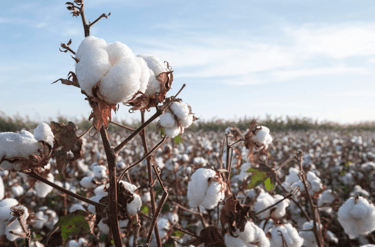
Can you tell if the seeds are also used for making cotton cloths? If not then what is the fate of cotton seeds?


Important Questions on Fibre to Fabric
The given pictures are from the famous movie 'Pirates of the Caribbean'. The movie depicts a world that dates back to century when East India Company was flourishing. In the first picture, we can see Pintel with his partner in crime, Ragetti are pulling the ropes and in another picture, Jack Sparrow can be seen holding onto the ropes for support.


Below is another picture from the movie where gunny bags are used for storing various spices.

Both of the materials are made from a plant fibre that is jute. It is one of the most affordable natural fibres. Jute comes from the skin and stem of a plant. Retting is a process that is done by immersing the bundle of stems in water.
What is the use of this process? Can't the fibres be extracted without this process?
Aruna noticed that some tassels are hanging from her mom's saree, which were not fastened to the edge but is a part of the saree only. On the other edge, she noticed some fringes in a row. Tassels and fringes have the similar colour to their emerging part.
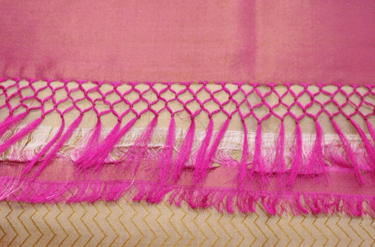
Aruna inquisitively took a picture and showed it to her mentor asking, "What are these fringes that emerge out from one edge of the fabric having similar colour, and how these tassels can be formed from a continuous piece of fabric?"
Could you clarify Aruna's doubt?
Linen is a plant fibre that was cultivated largely in Egypt around . Egypt is best known for its linen textile where priests used to wear linen as it was a symbol of purity and mummies were embalmed using linen. It is an ancient civilisation as well as its art of draping fabric beautifully around the body as sewing was not globally adopted.

Linen is a plant fibre that is extracted from the stem of the Flax plant. Flax fibre is soft, lustrous, and flexible. It is stronger than cotton fibre, but less elastic. Could you point out the appropriateness of the use of linen in Egypt?
Rida found that the material that is used to make her fridge cover does not soak tea when it sometimes spills on it. It remained lustrous for a year as her mother washed it and used it many times. The material needed little effort to clean and looks like a newly grasped from the market. But when she looked at her cotton dress which she bought three months back is now faded. She discussed the differences observed with her mother, on which she told Rida that the fridge cover is a polyester material.

Next month Rida has to go on a school trip to Cherrapunji. She wanted a customised tarpaulin (tent) for trekking. Will polyester be an appropriate choice for designing tarpaulin? Provide reasons to justify your answer.
In a village near Varanasi, Kavya visited a textile industry where silk is woven for mass production. She saw workers intricately picking up yarns and manually weaving by moving the shuttle from left to right. She was amazed to see the tedious task that took a very long time to weave only a meter of fabric. These workers were using hand-loom.
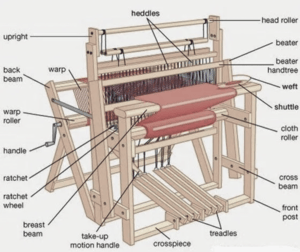
Secondly, she visited a silk industry which was in the heart of the city installed with many power looms in a large room, and it required very less human effort. Its production capacity was far greater than the hand-looms.
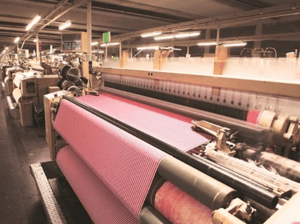
What are the reasons that power looms are not adequately installed in villages?
Jute is a natural fibre extracted from the stem of some species of plants. It is one of the cheapest natural fibres. It is a long, soft, shiny plant fibre spun into coarse, strong threads. Jute is the second-most used fibre after cotton. Jute is used to make clothes too nowadays. There are shirts, sarees, dresses and even handbags made of jute. Jute is no longer only used to make gunny bags and ropes.
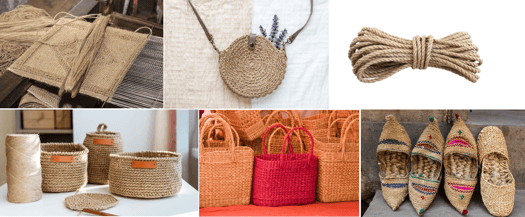
From the above understanding answer the following questions:
1. The jute plant does not need pesticides and fertilisers to grow well. Does this make jute expensive or inexpensive? Why?
2. Jute is a fibre that does not pollute the environment. In what way is this an advantage?
Once Raksha visited a tailor shop, and brought home some cuttings of fabric to study their properties. She took two pieces and found that one of the pieces shrinks when it is burnt with a candle. However, the other did not shrink on burning. Can you help her find out which of the two pieces of fabric was a cotton fabric, and which is a silk fabric?

Student Manish resides in the centre of the city. He enjoys wearing denim pants and shopping. He discovered one image at a museum depicting an ancient man draped in unusual clothing. He was startled because he had never seen such clothing in the shopping malls he goes to. He enquired to his father, "Where can I find that kind of dress?" It is a portrait of an ancient man, his father replied. We won't wear that style of clothing.
a) What types of clothes were used to wear in the ancient era?
b) Why in the olden days, people simply draped fabrics to cover their bodies?

